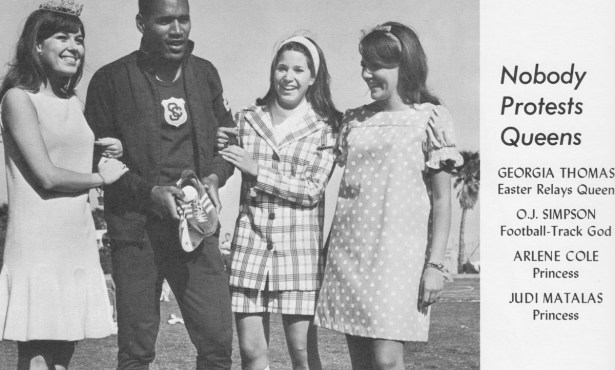Compounds to Cure Cancer?
A Key to Theapeutic Antibodies
I still remember when I was working as a first responder on the ambulances in my small town, hidden in the foggy hills of northern Italy. The time was flying by and the stories of the people I suddenly met were often dramatic with little time to make the right decision. But among all these people, cancer patients were a different matter. There was time to talk. When I was driving them to the hospital for routine checks, their stories unfolded along the highway and all had a very specific point in common: hope. Stopping cancer progression and having a better quality of life gave shape to that hope. And, although current cancer therapies have improved the chance of survival, with a decline of 20% in cancer mortality after its peak in 1991, there is still a major drawback that connects most of these therapies: side effects.
However, in the last three years a group of researchers at UC Santa Barbara has developed a new solution to make a class of compounds, commonly used as cancer therapeutics, to work like a light switch. While collateral effects – such as pain, allergic reactions and heart complications – are driven by anticancer agents that target the wrong area of the body, this new technology will allow an effective drug to be “turned on” at the right site and at the right time.
The research team, led by Professor Patrick Daugherty, in the Department of Chemical Engineering, has pioneered a new generation of engineered antibodies – the Y-shaped proteins of the immune system that recognize specific proteins on the surface of cells – named Pro-antibodies.
When fighting cancer, a therapeutic antibody works like a sophisticated key that by “unlocking” a very unique protein on the tumor surface – the keyhole – opens access to the cell triggering chemical reactions with lethal consequences to the tumour cell. But unfortunately, healthy cells in the body might have the same signature protein and encounter the same fate. It is at that point that a normal antibody can be engineered to work like a PRO. Pro-antibodies are antibodies that have been camouflaged with a molecular mask that effectively hides them in the body. Once this compound arrives at the cancer site, or tumor, a protease – an enzyme or protein that activates complex reactions by breaking other proteins – specifically cuts the link between the antibody and the mask, exposing the tumor to the destructive power of the drug. Commonly, cancer cells produce a variety of proteases, which play a number of roles in cancer progression, such as breaking the links between the tumor cells and the surrounding tissue. This escape mechanism to go in search of new tissues rich in oxygen and nutrients is also known as metastasis. But with this new class of compounds, when a Pro-antibody reaches the proximity of the tumor, proteases, like little molecular scissors, chop away the camouflage thereby unleashing the drug. A lethal friendly fire for cancer.
The first results on Pro-antibodies were reported last August 2012 by Daugherty and his team in collaboration with a research group led by another UCSB Professor, Erkki Ruoslahti (who also previously appeared in The Santa Barbara Independent for his work on cancer “smart bombs” on 26th Jan 2010). For this study, published in the Journal of Controlled Release, an antibody that recognizes atherosclerotic plaques was camouflaged with a mask, which could be removed only by a specific protease produced by inflamed tissues. Although in this case the pro-antibody was designed to target plaques without any therapeutic consequences, the results were encouraging. When the Pro-antibody was tested on tissues of mice affected by atherosclerosis, only the plaques in the inflamed areas were “heavily attacked” by the unmasked agent, while other healthy tissues known to have the same target protein on the surface of their cells were barely detected.
The results so far look promising and Professor Patrick Daugherty is full of enthusiasm about the future of these smart agents: “The targeted activity of Pro-antibodies opens up the landscape of potential targets for drug development. These engineered antibodies could be applied to any pathology including autoimmune, cardiovascular, neurodegenerative, infectious and other diseases for both detection and therapy”.
Since its first development, the Pro-antibody concept drew immediate interest for its potential as a drug targeting system. With intellectual property from UCSB, a Santa Barbara based startup company, CytomX Therapeutics Inc., has begun to move a modified Pro-antibody (ProbodyTM) towards the clinic. “ProbodiesTM are now being developed by CytomX. They have announced success in multiple animal models of cancer. High efficacy and a lack of the substantial side effects were observed when ProbodiesTM were delivered to block a tumor target protein called epidermal growth factor receptor (EGFR)” explained Professor Daugherty.
Although the company has now moved to South San Francisco, a collaboration between UCSB and CytomX is still fully active. “The current collaboration with the Daugherty laboratory exploits their unique knowledge of protein engineering to build on the discovery technology previously licensed to CytomX, with the goal of further optimizing protease-activated ProbodyTM agents” reported Dr. Stephen Moore, a Protein Engineering Scientist at CytomX Therapeutics. Moreover, in light of the recent annual meeting of the American Association for Cancer Research in Washington, DC, last April 2013, Dr. Moore said that “CytomX presented results of preclinical studies on its EGFR Probody™ program, which was well received. The work continues to demonstrate the significant impact that ProbodiesTM can have in the treatment of cancer and other diseases”.
According to the American Cancer society, in 2013 more than 1.66 million Americans are estimated to develop cancer. Dr. Daniel Greenwald, an Oncologist of the Cancer Center of Santa Barbara, could not agree more on the relevance of more targeted cures for cancer patients: “Although current therapies work, we can do much better. The cancer therapeutics currently in use have still significant side effects and toxicities, based in part on the limited ability to directly reach the tumor cells, the ability of cancer cells to resist the therapy and the difficulty in identifying targets that are unique to the tumor cells, which are not shared by normal cells.” And he concluded “With Pro-antibodies we can overcome the majority of these problems by potentially giving safe higher doses compared to standard therapy without the development of severe side effects”.
Years have passed now since those days driving down narrow roads in Italy, talking with patients. But, the hope of each one of them, which at that time looked to me like a faint glare with no shape, now has as a more defined contour and it is incredibly bright. I am one of the researchers of the Daugherty team at UC Santa Barbara. And after years in cancer research, working on a “camouflaged” antibody I have started to see a brighter future for the quality of life of those affected by cancer.



